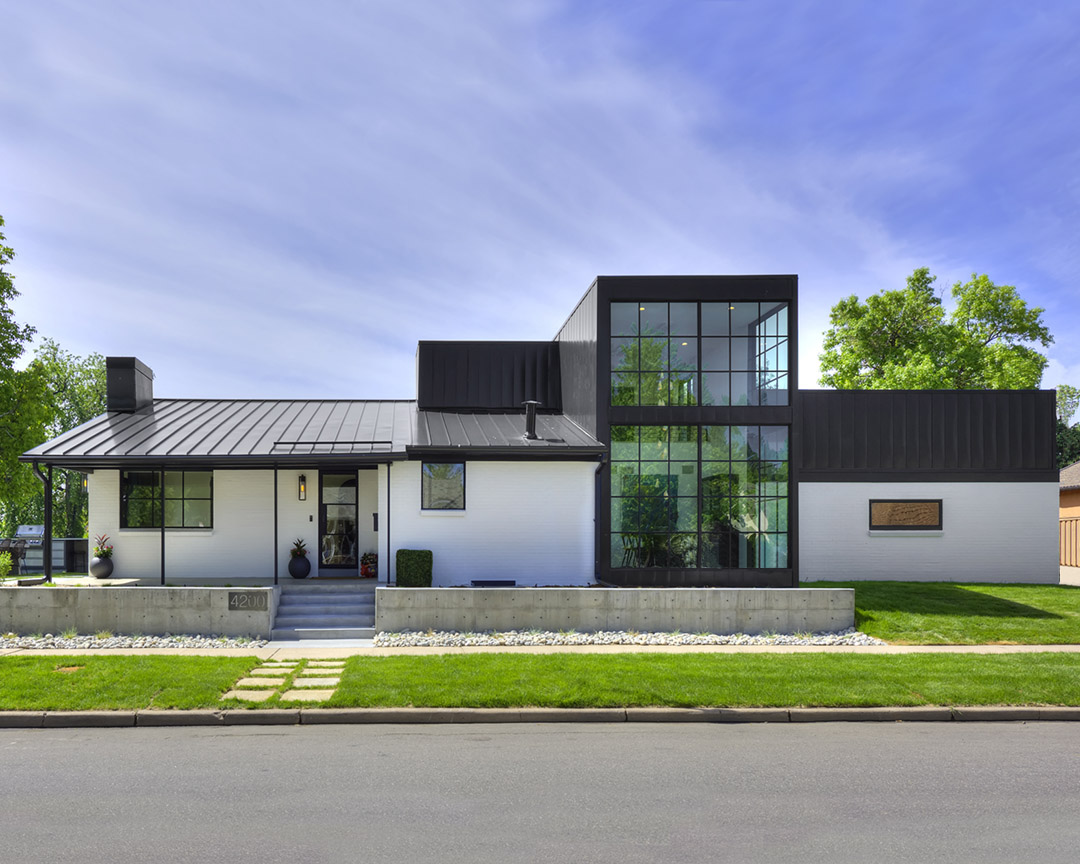

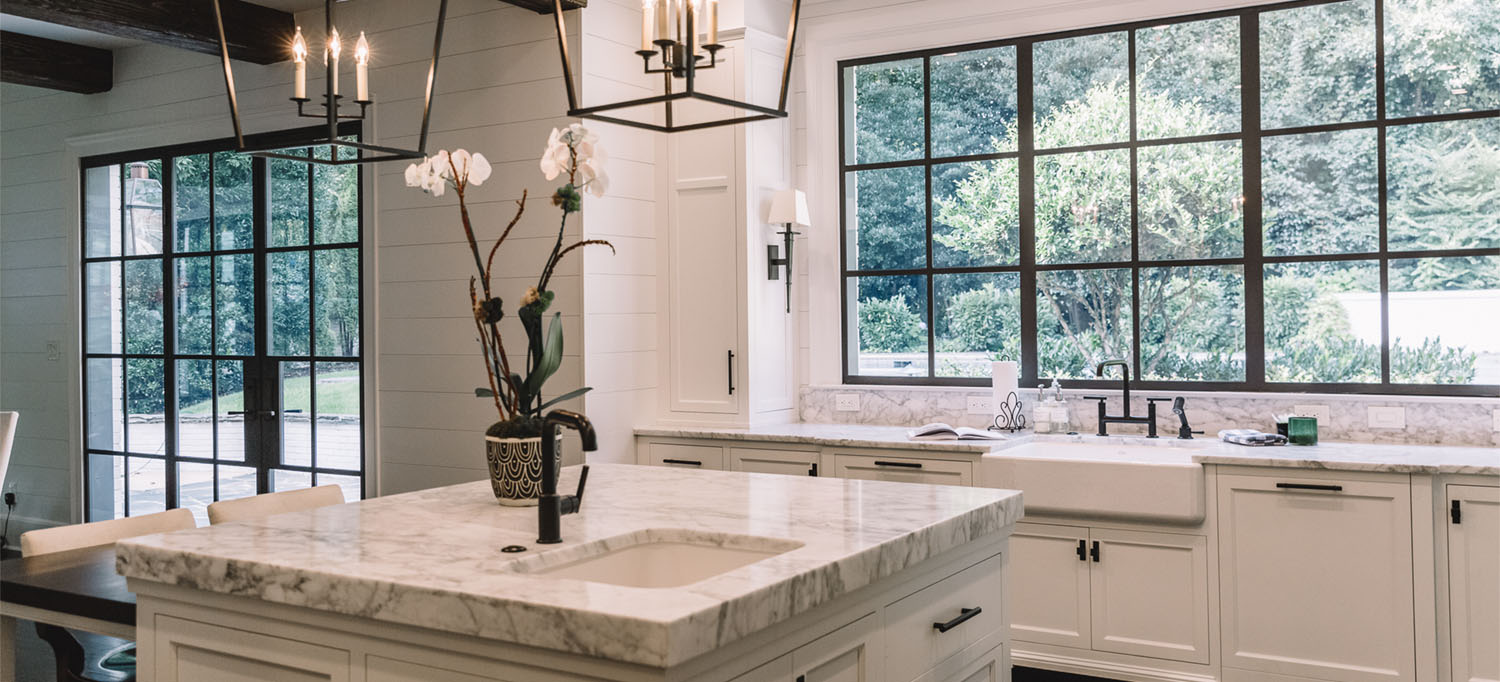
Steel doors and windows; black framed glass; metal doors and windows. We hear a lot of different names for this new building material. And for good reason too. Steel windows and doors have soared in popularity over the past several years, to the point where they're showing up in design inspiration everywhere, from Pinterest to home renovation shows.
FireRock VP of Sales, Kendal Carlson sat down with Tyler Kern from MarketScale to discuss steel doors and windows. Their discussion covers the history of steel doors and windows and the advancements they've made since the 1930s, as well as quality aspects that need to be considered prior to purchase and what types of questions homeowners, architects, and builders should be asking a supplier.
Listen to their conversation (or read the transcript below) to find out why steel doors and windows might just be the next big building materials trend.
This is the MarketScale AEC show, hosted by Daniel Litwin, the voice of B2B. Your weekly B2B kickback for the best thought leadership in the industry. Bringing you education, information, and inspiration.
Tyler Kern (TK): Alright, welcome to the podcast everyone. I’m your host today, Tyler Kern. And today we’re going to be talking about steel doors and windows with Kendal Carlson, she’s the VP of Sales at FireRock Building Materials. Kendal, so great to talk to you today.
Kendal Carlson (KC): Thank you, glad to be here.
{{cta('061b7b0f-ddbc-4991-972c-f7e038638100','justifyleft')}}
TK: Absolutely. So, I think recently – when I think about when I first saw steel doors and steel windows, I think it was probably on an episode of Fixer Upper that my wife had on in our house, or something like that. But I immediately liked the way that they looked and the style, and the way they kind of bridged the gap, I suppose, between industrial but also homey, and kind of brought inside outside, and that sort of thing.
So, it seems like there’s been a lot of growth in this area in recent years. Is that the case? What’s the market looked like over the last few years?
KC: There has been a ton of growth, and that has been because of exactly what you observed, which is everywhere we look, whether it’s a home show or a home related catalog or website, we see these skinny, black doors and windows, in furniture catalogs, all over the place.
The market, in our experience – we’ve been in the product category for several years here – has just been up, up, up. And of course, it can’t continue forever. But what we’re starting to see is more suppliers, more price points, better performance.
And so simply put, more people can figure out a way – whether it’s interior, exterior, windows or doors – to incorporate this great, timeless look into their homes.
TK: Yeah, and like most things, this isn’t a style that just came out of nowhere. These have been around since the 30s really. But I’m sure there have been some advancements in the product since then. So what’s really taken place since the 1930s that have allowed these products to be brought back into vogue and used effectively in homes and in businesses.
KC: Great question. There have been tons of advancements since the 30s, when Frank Lloyd Wright, actually first used steel windows in Falling Water, and that really accelerated them in their present prominence in residential design.
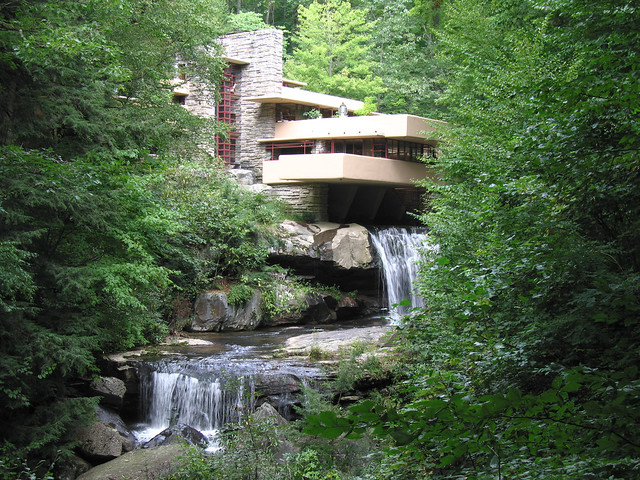
So since then, we’ve gone from a product that is essentially made to hold single pane glass. And if you live with single pane glass like I have in Alabama, and like I also have in Boston – you get very different experiences living with single pane glass depending on your climate. That’s just not functional for most people.
And so over the years – first of all, there’s been advances in glass itself. So now dual pane glass that’s very insulating is the standard. And then the steel windows themselves have adapted to be deeper, such that they can accommodate that thicker glass. That happened in the 50s or the 60s, and then as we’ve gone along, we’ve moved improved further.
So steel itself is a pretty good conductor of thermal energy. And that means if it’s cold outside and you have steel doors and windows, it’s going to be cold inside, at least in the vicinity of those units.
In the early 2000s, we started to see the first, what’s called a “thermally broken” frame. And what that means is that you’ve got a steel frame on the outside of your house and a steel frame on the inside of your house, in terms of the parts of the unit that’s exposed to the interior and the exterior. But in between those sides, you have a sort of rubber, plastic component. It’s actually a resin isolator, is what it’s called. And what that does is it prevents the cold frames on the outside of your house from conducting that thermal energy, resulting in cold frames on the inside of your house.
And so that’s a bit of a rote and technical answer, but what the result is, is you can live in a place like New York or Boston or anywhere it gets cold, even if it’s not up in the Northeast or traditionally cold climates, and it can be cold outside, but it can be warm and temperate inside your house. That truly is the biggest advancement. It came out of Europe and only the highest quality steel door and window manufacturers are using those thermally broken profiles at this point.
TK: So that kind of leads me on to another question that I really wanted to ask. And that is, if you’re able to then do that, does that mean that steel doors and windows have become more energy efficient than they maybe were in the past?
KC: Absolutely. So a couple things going on there. First of all, with any window, no matter what the sash material is made of – whether it’s wood or aluminum or steel – the most insulating part of that unit is going to be that dual pane, insulated glass that was an innovation from the mid-century.
As a result, steel doors and windows are actually a pretty compelling product because, compared to those other sash materials, they enable you to maximize the spans of glass, relative to the size of the frame. So if you consider a wood window, they have a much thicker frame. And while wood itself is more insulating than steel, glass is more insulating than wood, and steel is going to have relatively more glass. So just, in general, because its broad spans, steel has a bit of a leg up.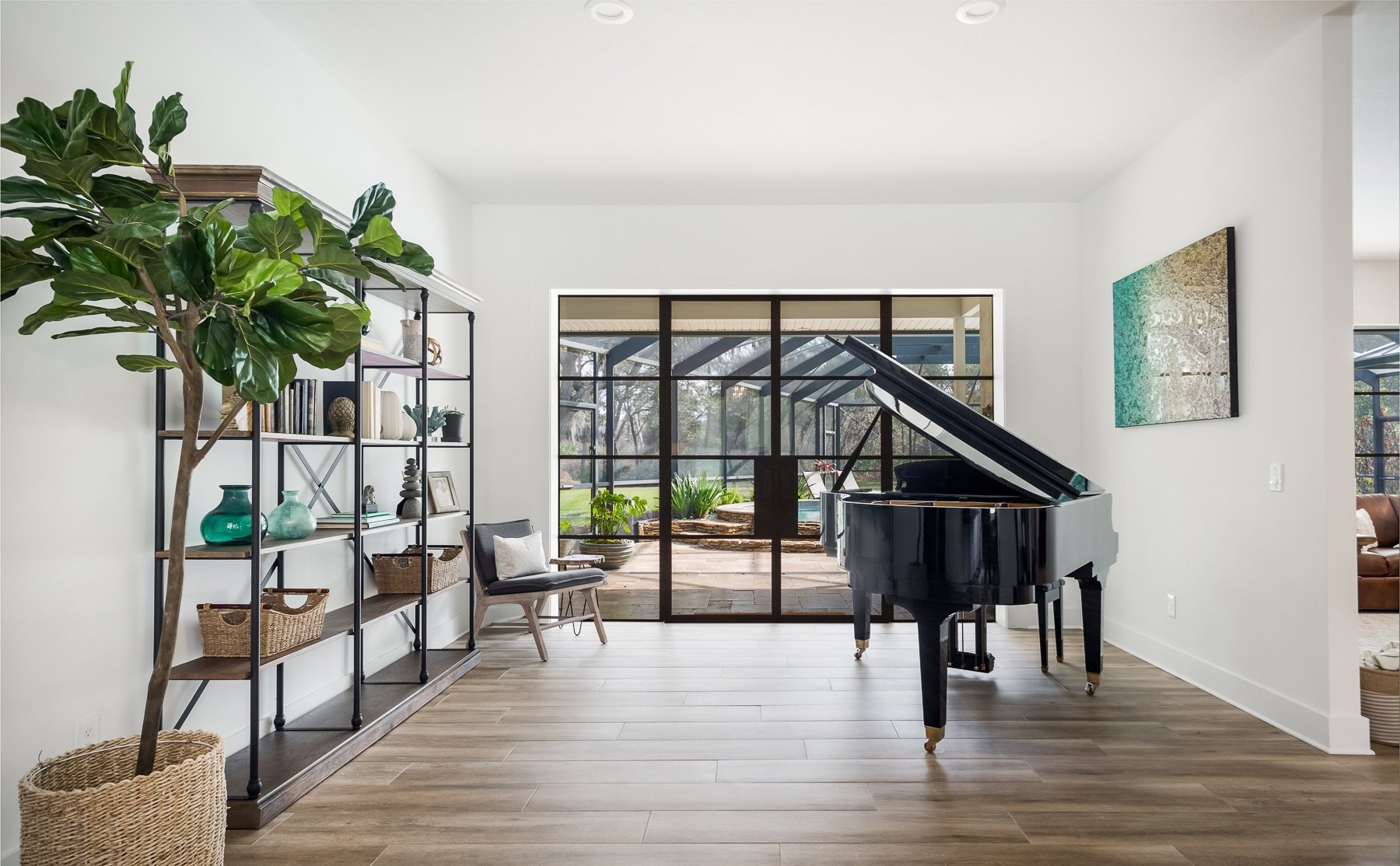
And then, secondarily, because of the thermally broken frames, you’re exactly right. We now see steel doors and windows, including the ones that we’re offering, that can pass energy codes, literally nationwide – no matter how strict, how progressive, and how cold the climate is.
The other part of that – and just something to be aware of as people consider thermally broken profiles in climates that aren’t traditionally cold. One of the biggest challenges with a non-thermally broken steel unit during a cold snap, even if it’s not really a cold season. Let’s just say we have four or five days where it’s below freezing – and that happens in Tennessee, North Carolina, even in Birmingham, Alabama, where FireRock’s based.
In those circumstances, you then will have a cold interior steel frame. And just like how when you step out of the shower in your bathroom, the mirror is the coldest surface, and you now have humid air. That humidity immediately is drawn to that cold mirror, and it condenses, forming water droplets. With a steel unit during a cold snap that’s non-thermally broken, you’re going to see that exact same thing. You’re going to have moisture in your home – 40% humidity is pretty normal and pretty comfortable. And even that level of humidity will condense on that cold steel frame.
So the two main reasons to go with a thermally broken option is because, first of all, you’re going to save on your energy bills, which is going to be related to greater comfort in the home. But second of all, you’re not going to have to worry about that interior condensation. For folks who have a stone floor, it’s not a big deal – your stone floors get wet, no problem. For folks who have purchased wide plank, antique wood flooring from a Belgian monastery and then had them shipped over to the US for painstaking installation, it might be a bigger deal. You might want to protect your investment by using a thermally broken unit.
TK: That’s really good advice and some really sound, just observations from the market and from somebody that obviously understands and has researched these kinds of things.
I’m also curious – you mentioned the quality of the steel and of the product earlier. How is quality measured when it comes to steel doors and windows? And how can – what options exist for people that are looking at this and saying, you know, how high does the quality go and how low does it go, and what’s the difference in between?
KC: Yeah, the answer to quality being measured is not frequently enough.
Because this has been such an aesthetically driven trend in recent years, we hear from customers all the time who are seeking that look, and they don’t have much more information than that. Which certainly is not the customer’s fault – there isn’t that much information out there.
The way that the marketplace for steel has developed, is that we started with some very high-quality steel suppliers. They’ve been around since the late 1800s. They’ve been making products with progressive technical advancements. You can rely on those big names to be the best there is and to insure a really wonderful experience with your steel doors and windows. The problem is, they cost a ton of money.
So, in more recent years, what we’ve seen is a lot of local welders and ironworkers – the folks who you might hire for a decorative gate, for example, or a railing – have started making doors and windows. The problem with that is, when you think of the windows in your home, they’re much more like a Swiss watch than they are like an artisanal metal sculpture. And so, buying what you think is going to be a Swiss watch from a metal sculptor is likely to result in missed expectations. And we see that all the time.
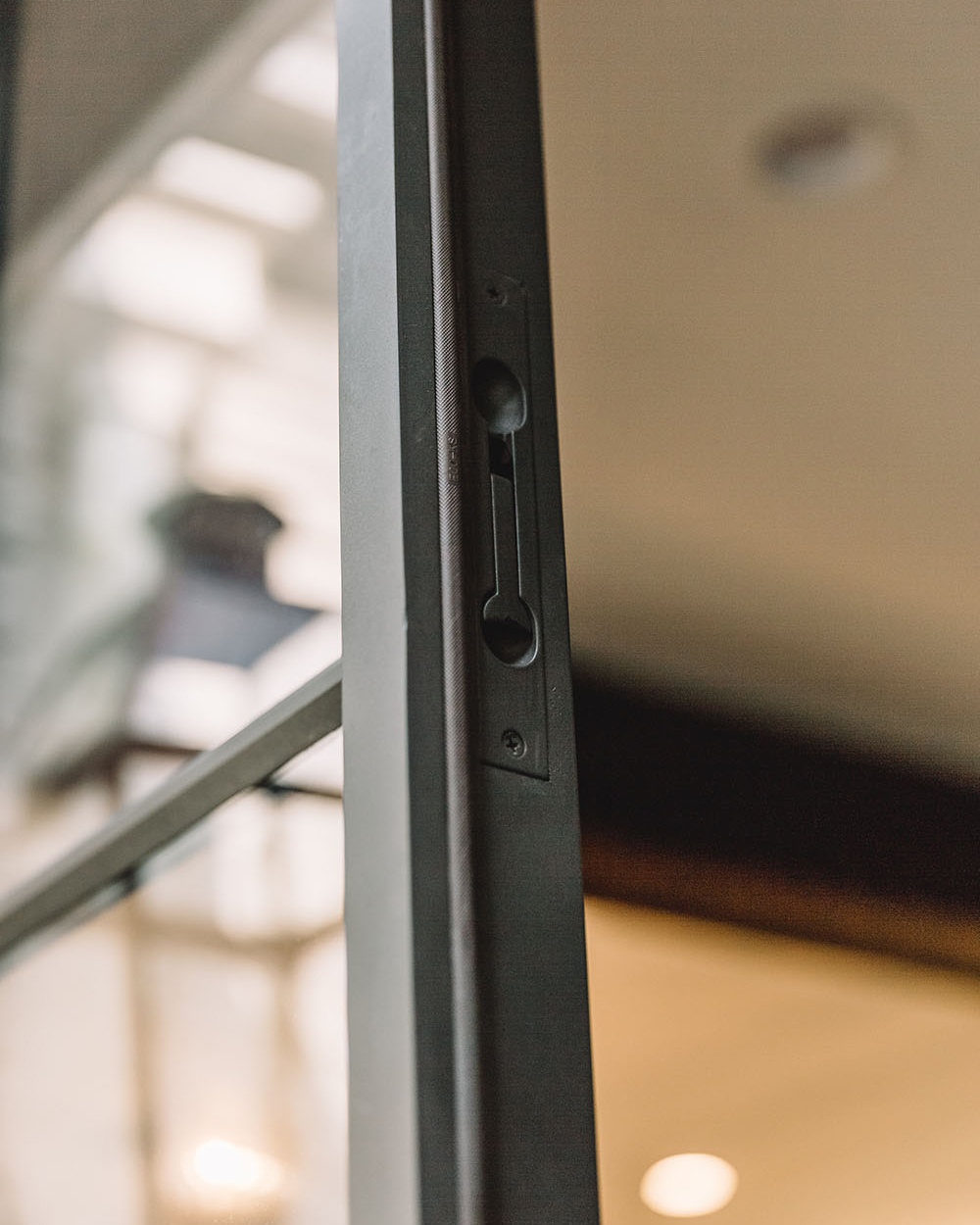 The biggest concern with steel – and this will take us directly into the most meaningful quality attributes – is that steel rusts, and there is no way about that. So because it rusts, what you want to do is avoid at all costs bare metal coming in contact with air, because air has moisture and air has oxygen. And those three things – the steel, oxygen, and the moisture – is just a recipe for rust to form. And there is just no way around it.
The biggest concern with steel – and this will take us directly into the most meaningful quality attributes – is that steel rusts, and there is no way about that. So because it rusts, what you want to do is avoid at all costs bare metal coming in contact with air, because air has moisture and air has oxygen. And those three things – the steel, oxygen, and the moisture – is just a recipe for rust to form. And there is just no way around it.
So what we see at the high end is these companies are protecting their units in a way that matches the customer’s expectations. These units are a big investment and they should be in your home essentially forever. And so these companies will clean their steel properly, and then, most importantly, they’ll galvanize it.
And that basically means bathing every inch of steel in a bath of hot zinc. And that hot zinc has really strong sticking capabilities, really strong bonds with the underlying steel. And that means that through the life of the unit, when you’re opening and closing doors, when, at some point, you have some wear and tear – it’s a fact of life – and some paint scratches off, that’s not a big deal. Because you’ve got this strong layer of zinc that’s heavily bonded to the metal, and that’s going to protect you from ever having bare metal exposed to air. So galvanization is the best way to protect steel.
But those artisanal metal workers operating in local markets, who are offering product for really compelling prices, don’t have access to galvanizers. They’re expensive, they’re dirty, it’s hard to find. And so simply put, they are selling a product that is basically just bare steel under a coating of either paint or powder coat. They might use a primer, but those things both lack the thickness that you would see from the galvanization, but most importantly, the bond strength.
And so, again, we’ve got wear and tear. Once that paint scratches off, that primer comes with it, or the powder coat begins to wear off – because it does degrade over time – then immediately, there you have bare metal exposed to air. And you’re going to see rust, which means the value of your investment, unfortunately, is going to take a nosedive. And they’ll never look the same again.
TK: Yeah, yeah, absolutely. Can you give maybe an estimate of the difference in lifespan, maybe between galvanized and ungalvanized steel products, and kind of, what you would be looking at, as far as replacing one versus the other.
KC: First, it’s good to note that you can’t replace galvanization. It happens during manufacture and literally these units are held up on chains with big hooks and they are dipped into a molten bath of zinc metal. Zinc metallization is another term for it. And so it’s not something that can be replaced – you either have it or you don’t.
A zinc coated unit that is then properly finished, you know be it a powder coat or a paint – we have a few reasons we prefer paint – but in either case, it has coatings on the outside and those are reasonably well maintained, nothing crazy. Those can last 75 years or more.
TK: Wow.
KC: The owner, they’ll want to do some wear and tear maintenance just to keep the looks going, but in terms of the underlying quality and the protection against rust, that galvanization is extremely long lasting.
For a unit that’s not coated in galvanization – this is really a shame, but we see it all the time. We go out to a job site where some local unit was installed – by local I mean a unit from those local artisans who I discussed earlier – and the homeowners haven’t even moved in yet. The units may have been in place for something like 4 to 8 weeks and we see substantial rust already happening.
And so it’s completely a function of the wear and tear that the unit takes on. But job sites are not kind to products like this. And for a lot of folks, neither is their lifestyle. These units are often made to be opened and closed, and even that can cause some wear and tear on them.
TK: For sure. And you mentioned care and maintenance from maybe the homeowner. Do you have anything that you would maybe recommend to people that would just be care and maintenance suggestions?
KC: That’s a great question and it’s pretty simple.
On a somewhat regular basis, every few months or something, it is helpful to take a soft cloth with a little bit of warm water and light soap – something like a little solution with just a dish soap or something simple like that – and just wipe down the surface of the units.
And that’s going to do two things. First of all, it’s going to make them absolutely beautiful, like the day they were installed. And the second thing is, it’s going to help remove any sort of dirt or other things that could eventually cause wear and tear, if say there was some friction applied. It’s just going to get rid of anything from the surface that has the potential of causing an issue when the unit is in use – anything that could possible scratch it.
So just generally keeping it clean and making it look nice. And if it looks great to the homeowners’ standards, then you can be pretty much assured that you’re doing what you need to do in terms of care and maintenance. And that’s really one of the great things about the product – it can be so low maintenance if it’s a good quality unit.
TK: Yeah, absolutely, just a bath every so often.
KC: That’s it – just a light bath.
TK: Yeah exactly, exactly. That’s not that difficult to remember to incorporate.
KC: (laughter) Right, if you bathe your dog, bathe your window – that’s about all!
TK: That’s right. Now it’s a bit more of a task to bathe my dogs. They’re not huge fans of it, but the windows aren’t going to try to squirm or get away, so that’s –
KC: (laughter) That’s right, much easier.
TK: That’s positive.
So walk me through the conversation that takes place when maybe you’re talking to a homebuilder or architect that would like to incorporate steel doors and windows into their project. What factors do they need to consider and what options do you walk them though? And kind of just walk me through that conversation from beginning to end as far as how that goes on your end.
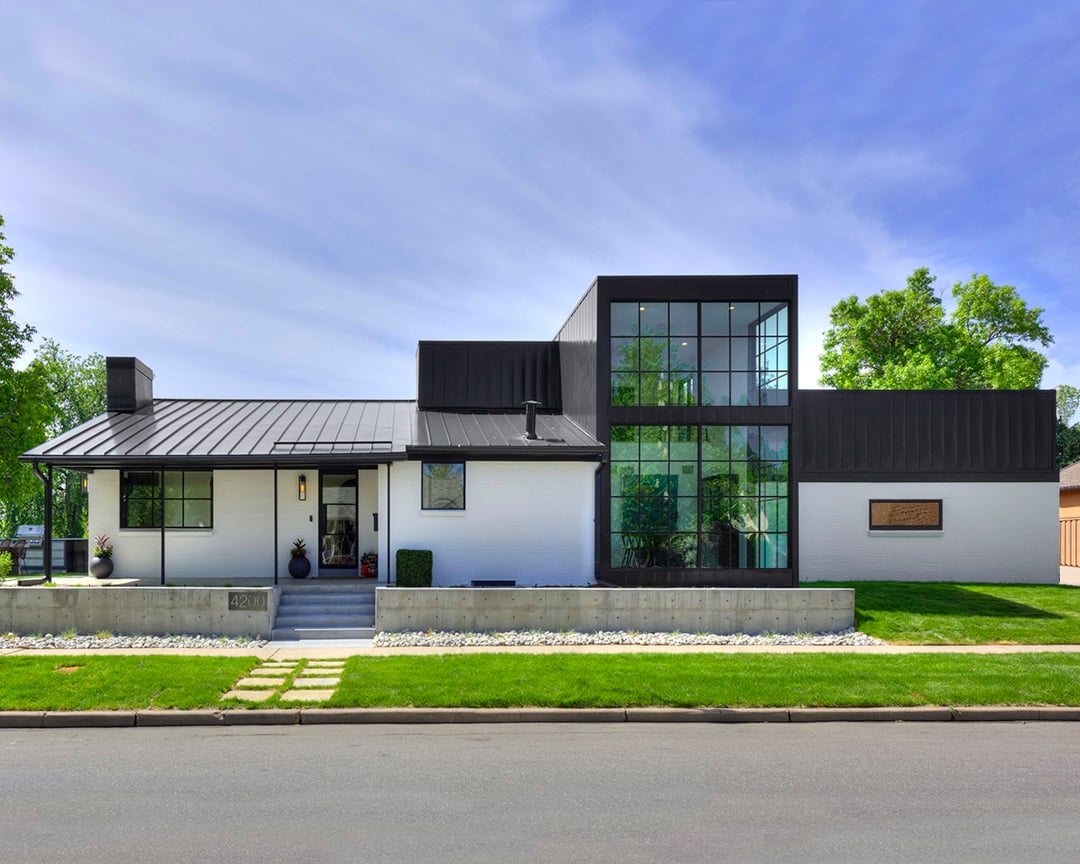 KC: One of the first things that I’m asked by an architect in a typical preliminary conversation is, “How large can you make these units?” And the answer is, “Pretty darn large.”
KC: One of the first things that I’m asked by an architect in a typical preliminary conversation is, “How large can you make these units?” And the answer is, “Pretty darn large.”
There are some companies that state maximums and minimums. But there are others, like ours, that recognize that these units can have a number of different configurations, and the configuration itself can lend strength where needed.
So if someone wanted a 20 foot tall window, for example – which, that happens – it needs to have a steel beam somewhere in the middle. But as long as you can accept that steel beam, then we can make them extremely high. We can go really tall, we can span very wide.
Part of it will depend on the lite pattern, which refers to the grid pattern and configuration of glass on the unit. With steel doors and windows, most products are what we call “true divided lite,” where that grid pattern is actually made of metal, and it does lend some real stability to the units as opposed to being purely aesthetic.
And so, if you wanted a 12 foot by 12 foot single piece of glass with no muntins or “grids” across them, then that has some stability challenges. But if we wanted that same unit and we got to divide it up into say, 15 different rectangles, then that unit has much more stability to it.
So there’s flexibility. But the thing to know is that when dealing with a high-quality company, they will have several different profile options that can be applied in the right conditions to meet your needs, and also that the product is truly designed for massive openings.
So larger the better with this product, and that’s where it truly shines.
If you’re dealing with the right partner, then they’re going to have some specialized options to say, “Hey, when we go 12” x 12”, we’re going to use X profile instead of Y profile because it has the structural integrity necessary to hold that unit without any warping or buckling.”
TK: Right, right, absolutely. So, and also, I think that there’s an advantage for you in understanding the market so you’re able to point clients to the right suppliers as well. Is that something that you would say is accurate?
KC: That’s absolutely right. One of our big advantages is that we spent so much time learning about the market because we were new to it. And so for a solid six months, it was a full time job to be speaking to different suppliers, all day every day, to learn what neat things people were coming up with, to learn how their products fared in terms of quality, what sort of quality elements were in place, and truly, what their competitive advantage was in the market.
And by doing so, that really allowed us to simplify because the market is really divided into two groups. There’s the high-end high quality, and then there’s the low-end low quality, which is the metal working local artisan type model.
And so generally, a homeowner and architect or a builder may have in mind three or four different steel suppliers, but they probably have in mind one high-end company and three local companies. And so being able to put into perspective what they can expect from those two groups usually helps people understand, “Okay, this is my forever home, it’s a two million dollar house, I want to protect my investment. I’m a high-end customer, let’s talk about that.”
Where someone else might say, “This is a look, but I’m probably going to be in this house for ten years, and while I understand the value proposition of superior quality, it’s not worthwhile to me.” That’s not necessarily the best judgement on behalf of the low-end customer because then they might be in a tough position to sell their home if their unit shows signs of rust or signs of wear, which are highly likely. But it’s not for everybody, and we recognize that and we want people to not only be successful with the product, but really happy with the value and the investment.
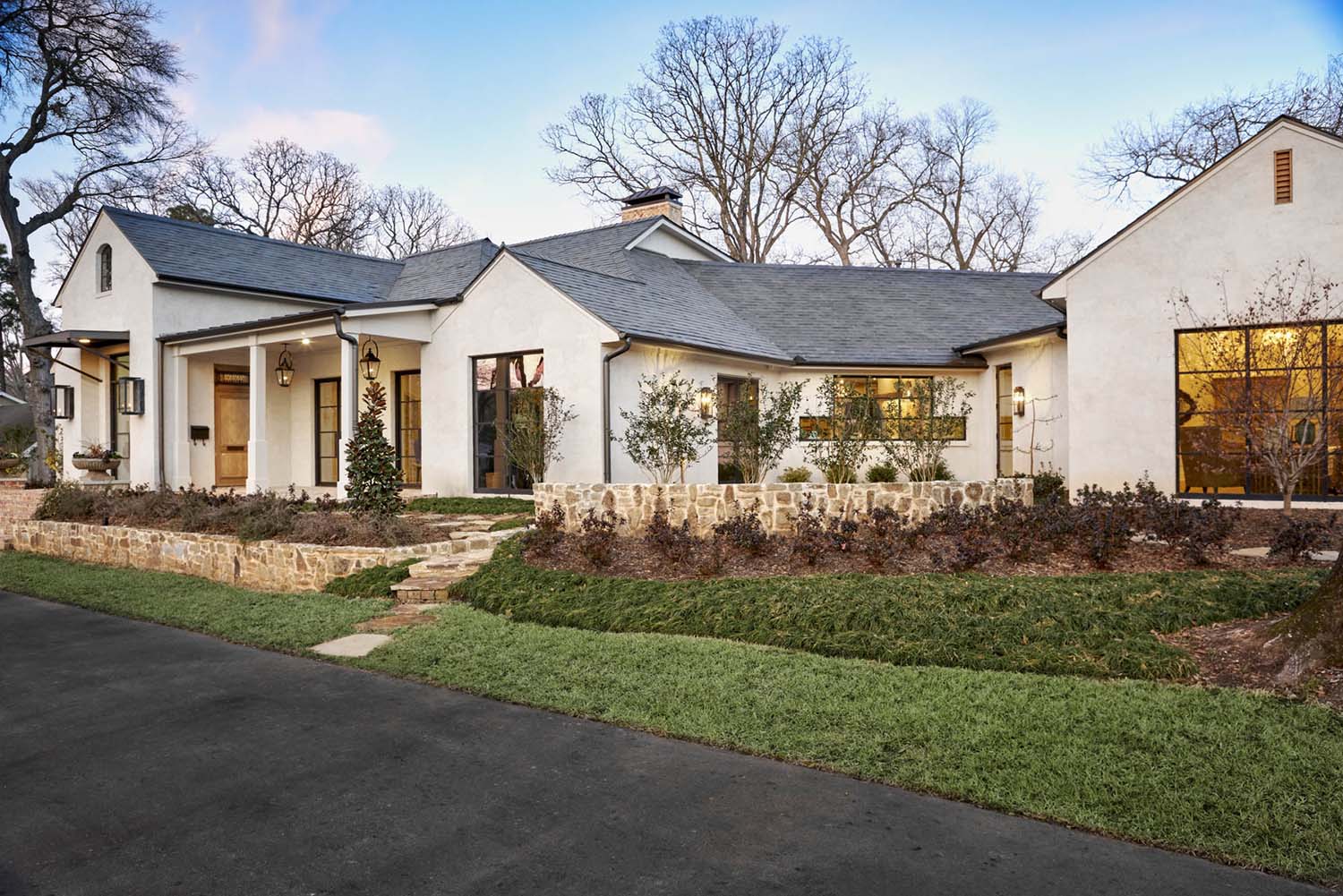
TK: Yeah, and you’re bringing up some aspects of price point, and that sort of thing. Are there options available to kind of tailor a product to a particular budget? I know not everybody has the budget they wish they had – you know everybody wishes they could be building their two million dollar dream home, and that sort of thing.
But what options are there as far as having a product that looks really great, but also doesn’t break the bank?
KC: Absolutely. Great question. There are always options, though there is a bit of a preliminary hurdle.
So, for example, if you would like an impactful unit and you’re trying to stay under $10,000 and have a unit produced and installed, that’ll be a challenge. You may be able to find a single door, something pretty simple – but just one of those units for the $5,000 range, if you include installation.
But for the most part, you really should be expecting to spend somewhere in the neighborhood of $10,000 - $20,000 on an impactful steel unit.
From there, if that is appropriate for your budget, one of the better ways to consider cost management is considering an internal unit – thinking about a room divider. The advantage here is that typically you can use a lighter weight profile. There’s less structural integrity required because interior spaces just tend to be smaller. And if the house is existing, the unit will have to be carried into the house somehow. And so with that in mind, they just tend to lend toward somewhat smaller units where you still get a lot of impact.
You don’t need thermal breaks on the inside of your house, so that’s a big benefit – you automatically get to skip the highest price profile for any manufacturer who offers thermal breaks. You can also use single pane glass, which means it’s clear glass and you can have a narrower profile, and often narrower profiles can be less expensive, although not always.
So choosing an interior unit can be just a really great way to get impact in a location where it’s visible from a number of different rooms. Whereas, on the outside of your house, it is sometimes difficult to find the right place for a single unit.
With that said, a double French door, so your standard double door – about six feet wide, eight feet tall – that unit for an entry is about $10,000. Just for an average, higher-end profile, it’ll go up or down a couple thousand dollars, depending on the cost of installation, but if you are considering an exterior unit, and you’re looking for that big impact, an entry is a really good way to get that.
TK: Yeah, that’s a great point. And I like what you’re talking about, about interior uses, because it really still allows to have that style and also kind of the – it provides that openness that I think people are really craving these days when it comes to open floor plans and that sort of thing.
KC: So when we look at Pinterest and see steel doors and windows, the ones that we tend to be drawn to are very, very narrow. They have the least amount of steel and they have big panes of glass, and they’re beautiful.
But what is hard to see, if you don’t work with this product day in and day out, is that most of those tend to be single pane glass. Because that’s the way you achieve those very narrow sitelines.
Otherwise, that glass is pretty heavy. If it’s insulated, dual pane glass, it’s pretty heavy, and it requires a more substantial frame, and more substantial muntin bars, or grids, to hold that glass up. So if you’re really seeking that ultra narrow look, go with an inside unit where you don’t have to worry about that insulated glass. That way, you’ll get the look that you want, and hopefully save a little money in the process.
TK: Well, I think this has been a fantastic buyer’s guide to steel doors and windows. Just to give people a great framework for – no pun intended on framework – but give people a good idea of what the marketplace is like and what things to make sure that they look for.
Do you have any other tips for anybody who might be considering implementing this moving forward, before they make any decisions?
KC: Yeah, I would just encourage everyone to ask questions.
We’re so focused on the aesthetics of the product, and really that is its primary job. But if it fails in its secondary job, which is to last, and its tertiary job, which is to work, it just won’t be a very lasting, happy relationship between you and your steel door or window.
And so, ask questions about rust prevention. Ask questions about profile strength and where the profiles – which are the lengths of steel that are welded together at the corners to create the unit – ask where those profiles come from and how they know tolerances are tight and there’s good stability there. Ask how the glass is installed.
Just ask as many questions as you possibly can, talk to a few different companies, and then see what you learn.
There will be a number of companies that either give answers you’re not satisfied with or simply don’t have answers at all because they may not be appropriately informed. And for an investment like this, you deserve better than that.
So just do your homework, that’s it. And give FireRock a call because we’re always happy to have these conversations, even if just you’re considering the product and you aren’t sure if it’s for you.
TK: Absolutely. I’d be willing to bet good money that you would prefer to have a customer that’s done their homework, that comes with good questions, because then that allows you to better understand what exactly they’re looking for and how you can best serve their needs.
KC: That’s it. And we point people to other products all day long if we’re not the right fit for them. There are other ways to achieve a look that’s similar to steel for certain types of units, and we’re happy to provide that consultation.
Because the end goal is for everybody to be happy with what they have, and that means it has to meet their budget and their expectations too.
TK: Kendal Carlson, VP of Sales at FireRock Building Materials. Thank you so much for joining me today to talk about steel doors and windows.
KC: Thanks Tyler, it was really a pleasure.